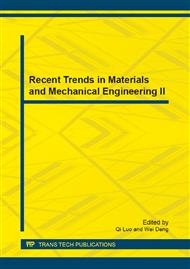p.129
p.134
p.139
p.144
p.149
p.154
p.160
p.167
p.177
The Influence of the Processing Parameters in the Ultrasonic Activated Injection and Extrusion
Abstract:
A multifunction experimental system was designed in a flexible configuration allowing simulation of thermoplastic material processing through extrusion, injection or micro-injection in the presence of the ultrasonic activation. The paper presents the results from a set of experiments performed at first in classical extrusion conditions of most common polyolefines (LDPE and PP) and then in the presence of the ultrasonic activation. The main processing parameters were compared, analyzed and ranked after their effect on extruded flow as output data. For the specific conditions of extrusion through narrow interstice, the ultrasonic activation was proved to be the main factor of influence overcoming the classical factors as temperature and the pressure. The last presented set of experiments was focused on particular processing conditions of injection through narrow section thin-wall injection and microinjection. In these cases, the ultrasonic activation does not play an important role as single influence factor but could amplify or strengthen the influence of classical setting parameters of the process: mould temperature, injection pressure and temperature.
Info:
Periodical:
Pages:
149-153
Citation:
Online since:
September 2013
Authors:
Price:
Сopyright:
© 2013 Trans Tech Publications Ltd. All Rights Reserved
Share:
Citation:


